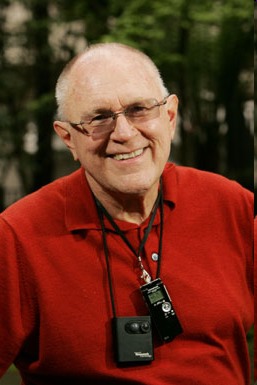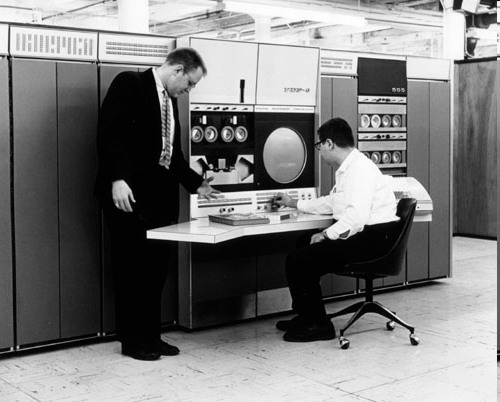| Gordon Bell And DEC - The Mini Computer Era |
| Written by Historian | |||||||
Page 3 of 3
Looking to the FutureAll of this doesn't reveal another side of Gordon Bell. As well as writing a number of well known books on digital design, he wrote papers that predicted the future of computing - a multiprocessor one of course - and placed public bets with colleagues about when the multiprocessor future would arrive on every desk top. In 1972 he formulated Bell's Law of of Computer Classes, which describes how types of computing systems (referred to as computer classes) form, evolve and may eventually die out. The definition of the law states: Roughly every decade a new, lower priced computer class forms based on a new programming platform, network, and interface resulting in new usage and the establishment of a new industry. Bell considered his law to be partially a corollary to Moore's law which states "the number of transistors per chip doubles every 24 months" but the driver of Bell's law was the availability lower cost components. It postulates that technology advances in semiconductors, storage, interfaces and networks enable a new computer class (platform) to form about every decade to serve a new need. At the time the law was proposed classes included mainframes (1960s) and minicomputers (1970s) and in an interview in 1992, by which time networked workstations and personal computers were firmly established Bell said in an interview: "Twenty-five years from now...computers will be exactly like telephones. They are probably going to be communicating all the time" To promote the development of high-performance computing applications, the Gordon Bell Prize was established in 1987 for the application of parallel processing to real scientific and engineering problems. Funded by Gordon Bell, it is administered by the ACM and IEEE and is presented annually to recognize performance achievements that are innovative and generalizable. The 1994 winners of the prize were so successful, with performance figures in the TeraFlop range for the time, that Bell doubled the prize because he was so pleased! Curating the Past and LifeloggingTogether with his wife Gwen and with the assistance of DEC, Bell founded the Digital Computer Museum in 1979 and was a founding board member of its successor, the Computer History Museum. In 2003 he was made a Fellow of the museum: "for his key role in the minicomputer revolution, and for contributions as a computer architect and entrepreneur." Gordon Bell joined Microsoft in 1995 but had already been involved in the establishment of Microsoft Research in an advisory capacity. His first focus was telepresense, technologies that allow a person to engage with others from a remote place or time - summed up by Bell as being there without really being there, then. At Microsoft Research he became the "experimental subject" of a project inspired by Vannevar Bush's hypothetical Memex computer system. MyLifeBits is an experiment in life-logging, the practice of wearing computers in order to capture continuous data from lifetime experiences which can be be accessed with speed and ease. The project was, and is, an attempt to fulfill Vannevar Bush's vision of an automated store of the documents, pictures (including those taken automatically), and sounds an individual has experienced in his lifetime. For this, Bell digitized all documents he had read or produced, CDs, emails, and so on and going forward gathered web pages browsed, phone and instant messaging conversations more or less automatically using wearable devices. The book he co-authored in connection with this project is available in two editions Total Recall: How the E-memory Revolution Will Change Everything (2009) and Your Life, Uploaded: The Digital Way to Better Memory, Health, and Productivity (2010).
Man or MachineYou may think that these later achievements stand a good chance of having a longer term effect on the computing world than just having invented a few really good machines. I would argue that the influence of the PDP series of machines and the VAX goes deeper and is much longer lasting. The PDP series proved that computers had a value in a smaller environment. They proved to many people that a smaller cheaper and more personal compute was needed. The PDP 8 even looks like the archetypal first home computer the Altair, complete with flashing lights and keyswitches. They also formed the breeding ground for the people who would one day push the microcomputer revolution forward. The PDP 11 in particular, with its regular modern architecture, demonstrated what good computer principles were all about. I'm sure that C and Unix were inspired by its internal design and there must be lots of other lesser known software. There also must be lots of programmers who still look back on the PDP 11's design as a golden age compared with the ugliness of the current generation of the x86 family.
Published August 19, 2014 Updated May 24, 2024 More InformationRelated Articles
To be informed about new articles on I Programmer, sign up for our weekly newsletter, subscribe to the RSS feed and follow us on Twitter, Facebook or Linkedin.
Comments
or email your comment to: comments@i-programmer.info <ASIN:0525951342> <ASIN:1597404918> <ASIN:0844740152> <ASIN:0452296560>
|
|||||||
| Last Updated ( Friday, 24 May 2024 ) |



